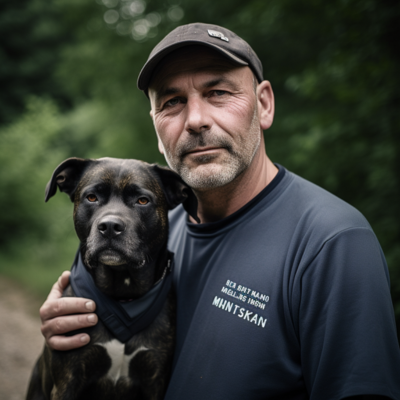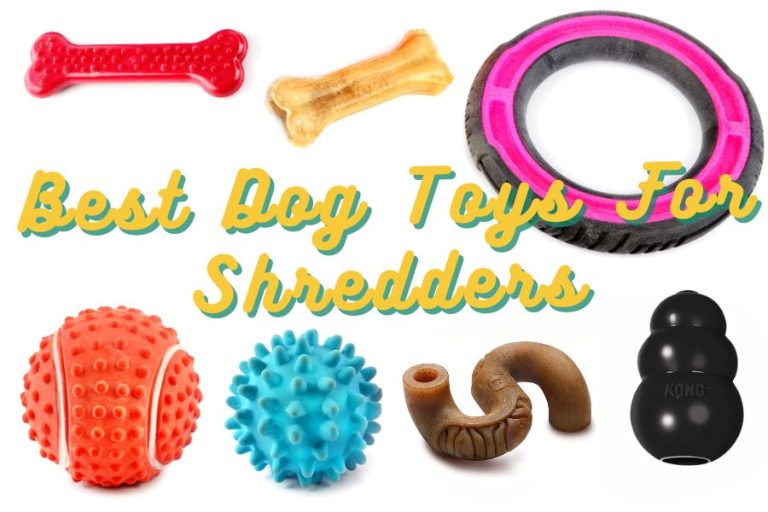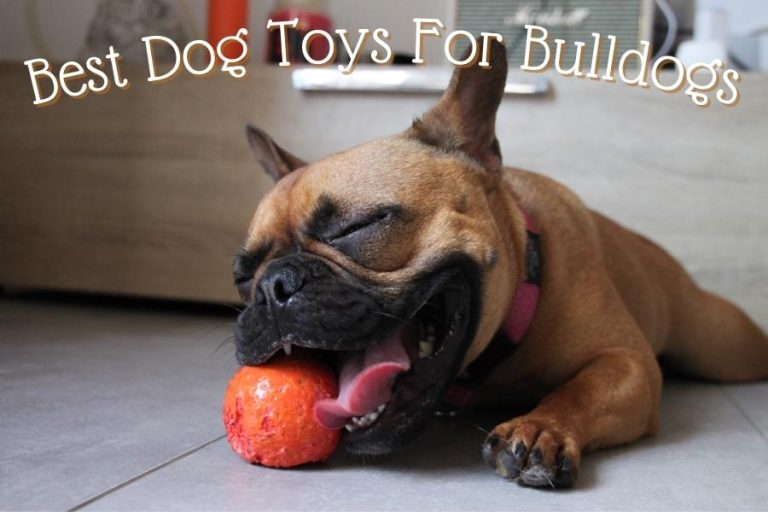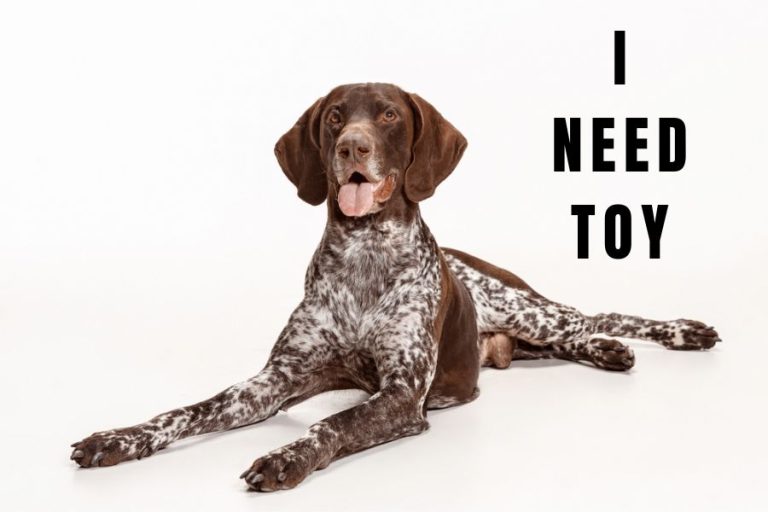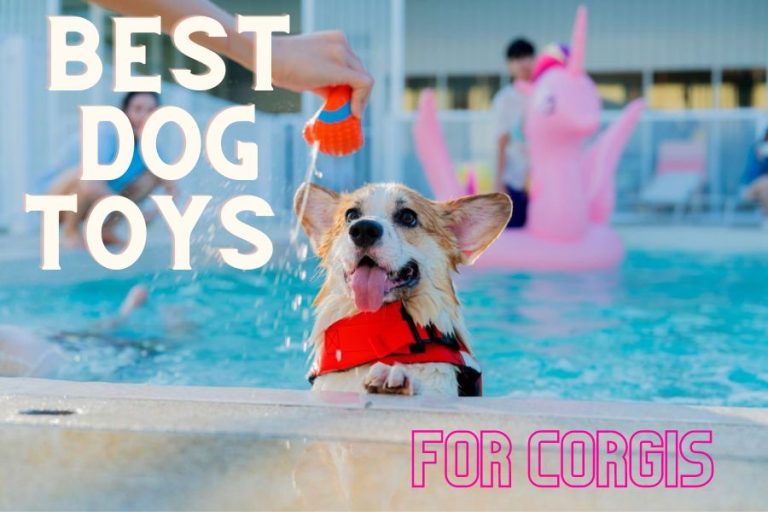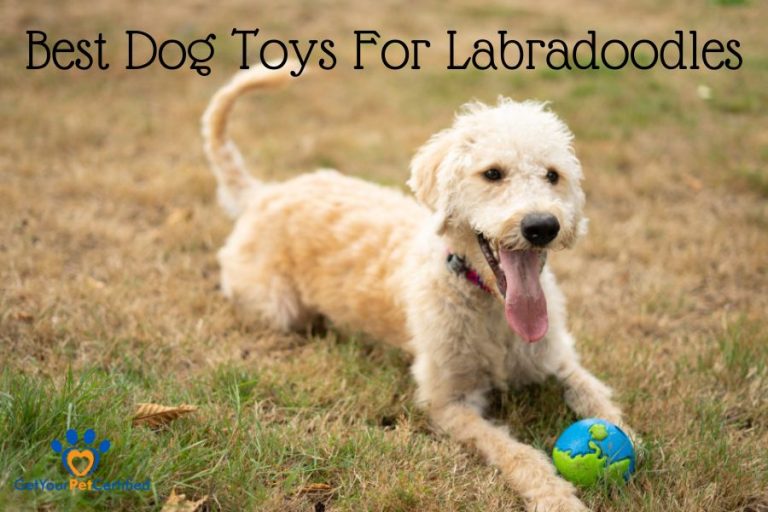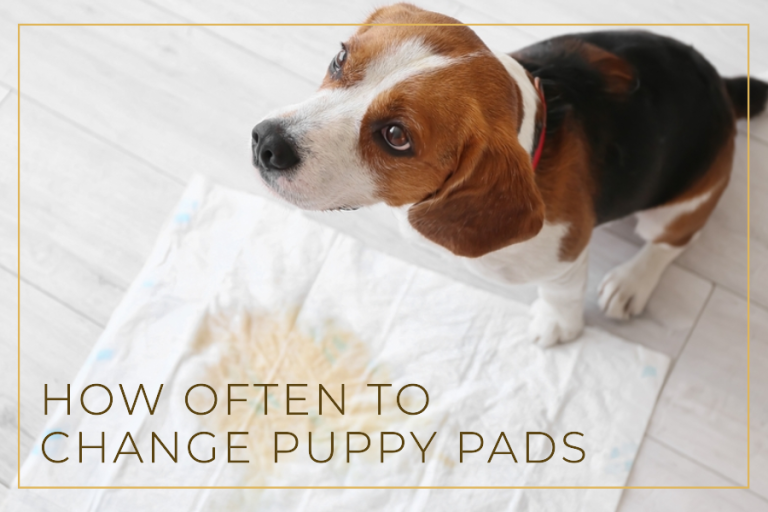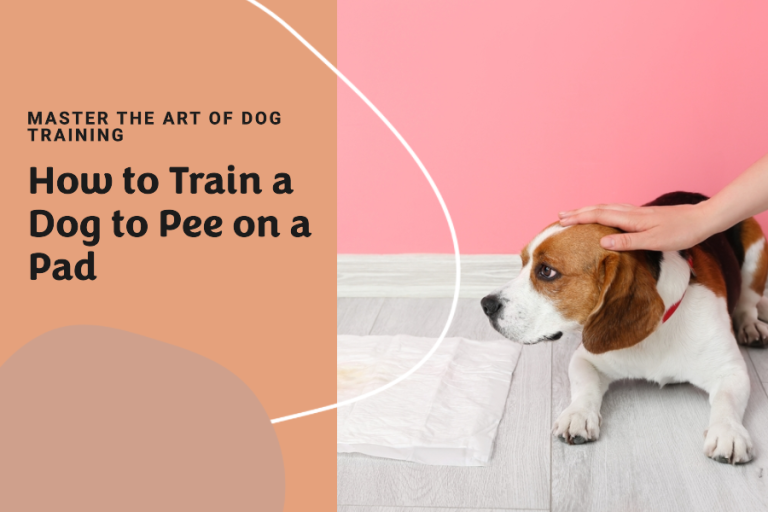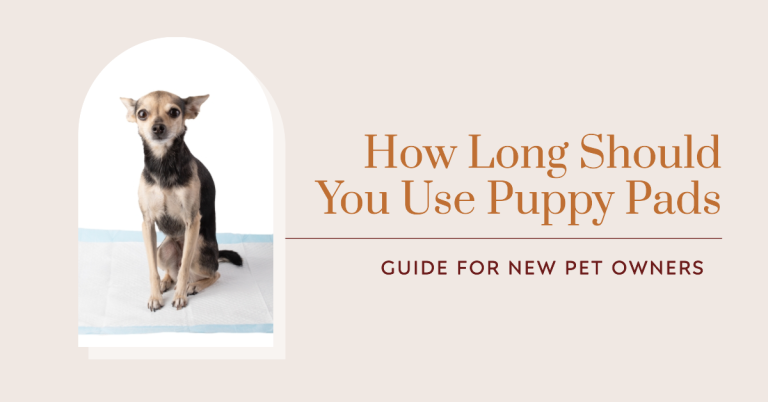How To Build An Outdoor Dog Potty Area On Concrete: Perfect Space For Your Dog !
Introduction
Living in an urban environment or in a home without a grassy backyard can be challenging for dog owners. It’s not just about convenience; it’s about creating a comfortable, hygienic space for your beloved pet. Imagine a world where you no longer have to worry about how to build an outdoor dog potty area on concrete. Welcome to the concept of an outdoor dog potty area!
As dog owners, we understand how important this topic is. This article will guide you through building a dog potty area on concrete, a material that’s both practical and beneficial for this purpose. From selecting the right materials that suit the concrete surface to ensuring proper drainage and odor control, we’ll cover it all. You’ll learn about innovative solutions that keep your concrete potty area clean, fresh, and above all, pet-friendly.
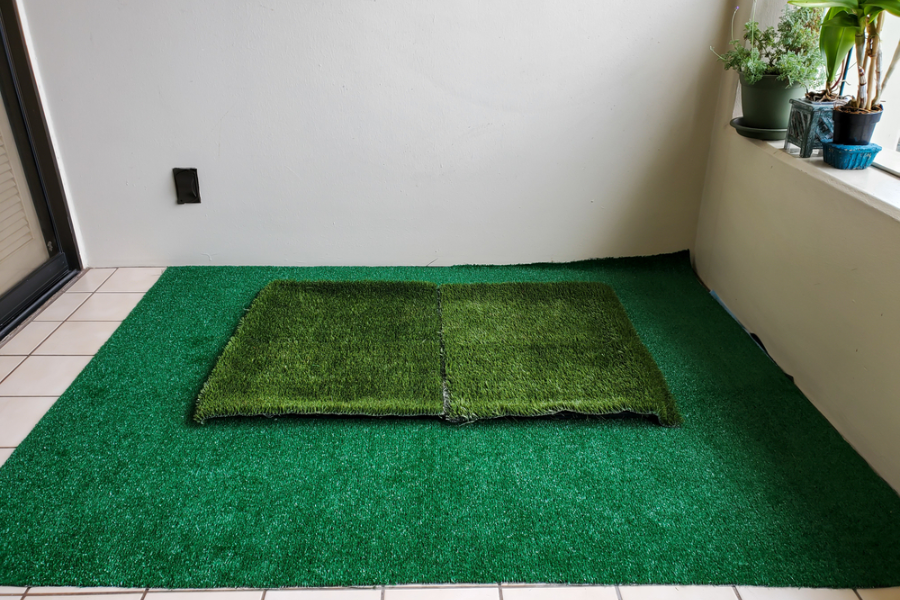
How To Build An Outdoor Dog Potty Area On Concrete?
An outdoor dog potty area is a designated spot in your yard where your dog can comfortably and hygienically do their business. This concept is not just a luxury but a necessity for dog owners, mainly due to the convenience and health benefits it offers.
Having a dedicated spot for your dog to relieve themselves can save your lawn from damage and keep your home cleaner. It also promotes better hygiene for your pet, reducing the risk of them stepping in or rolling around in their waste.
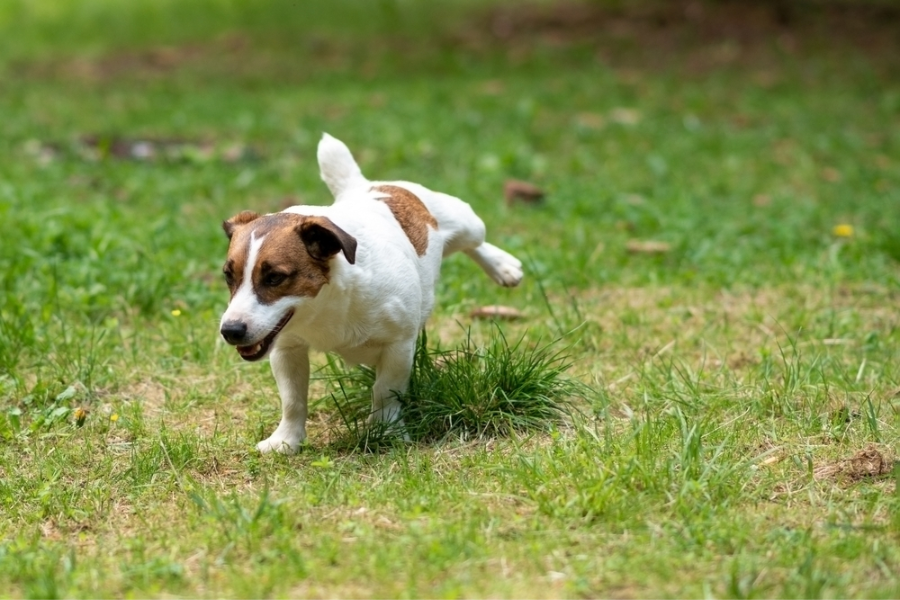
What is an Outdoor dog Potty Area?
An outdoor dog potty area is a specific section of your outdoor space dedicated to your dog’s bathroom needs. It is generally built on a hard surface, like concrete, which makes cleaning easier and more efficient. This setup is crucial for dog owners because it offers convenience. No more random surprises around the yard – and promotes health and hygiene for both owners and dogs. It prevents the spread of bacteria and parasites that can be present in dog waste, protecting your family and your pet.
Detailed Step-by-Step Guide
Here is a detailed, step-by-step guide to help you create an efficient and hygienic potty area for your furry friend:
Step 1: Choose the Location
- Select a Spot: Pick a corner or section of your concrete area that is easily accessible for your dog but also convenient for you to clean.
- Consider Privacy: Some dogs prefer a bit of privacy, so choose a spot that isn’t in the main foot traffic area.
Step 2: Measure and Mark the Area
- Determine Size: Based on your dog’s size, decide how large the potty area should be. A space of at least 4×4 feet is usually adequate.
- Mark the Area: Use chalk or tape to mark the chosen space on your concrete surface.
Step 3: Prepare the Surface
- Clean the Concrete: Ensure the chosen area is thoroughly cleaned. Remove any debris and wash the surface with a pet-friendly cleaner.
- Dry the Area: Allow the area to dry completely before proceeding.
Step 4: Lay the Base Layer
- Choose a Base Material: Options include pee pads, artificial turf, or even a layer of gravel.
- Secure the Base: Ensure the base material lies flat and is secured in place to prevent it from shifting. You can use heavy-duty outdoor tape or a frame to keep it in place.
Step 5: Create a Drainage System
- For Gravel Base: Gravel naturally allows for drainage. Ensure there’s a way for the liquid to drain off.
- For Artificial Turf: Elevate the turf slightly with a waterproof tray underneath to collect and dispose of the urine.
Remember, patience is key when training your dog to use a new potty area. With a bit of effort, you can create a functional and comfortable space that meets both your and your dog’s needs.
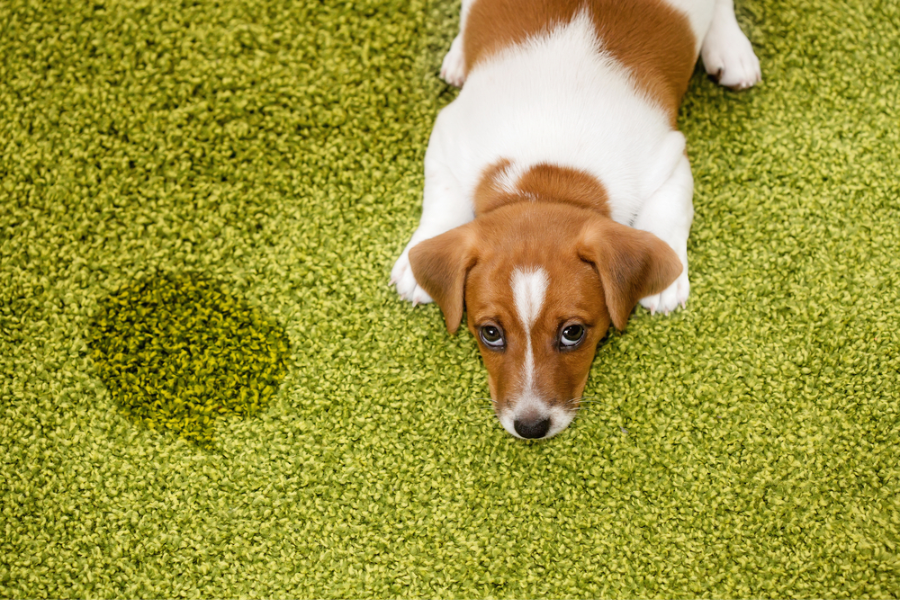
What Are Material For Dog’s Potty Area?
When it comes to choosing the patio material for your dog’s potty area, you have several options. Some popular materials to consider include pea gravel, artificial grass, or wood chips in making dog potty area. Each material has its pros and cons, so it’s important to consider factors like your dog’s breed, size, and habits before making a decision.
Pros and cons of differents materials
| Material | Pros | Cons |
| Artificial Turf | Mimics real grass, durable, easy to clean | Requires regular cleaning, can be expensive |
| Pee Pads | Highly absorbent, disposable, convenient | Not environmentally friendly, can be torn up |
| Natural Grass Pads | Natural, often biodegradable | Needs regular replacement, can be expensive |
| Gravel or Sand | Good for drainage, inexpensive | Messy, requires replacement, not soft on paws |
| Concrete Pavers | Durable, low maintenance | Not absorbent, requires frequent cleaning |
| Wood Chips or Bark | Natural feel, relatively inexpensive | Can harbor bacteria/insects, needs replacement |
Time Frame
Building an outdoor dog potty area can be a weekend project if you’re doing it yourself. However, the time frame can vary depending on the size of the area, the material chosen, and your skill level.
Installation: For instance, laying artificial turf or gravel is relatively quick and can be done within a few hours, while setting up natural grass pads or concrete pavers might take a bit longer.
Maintenance: Pee pads are quick to change but need frequent replacing. Artificial turf requires regular washing and sanitizing. Gravel or sand needs to be sifted and cleaned periodically, while natural grass pads will need regular replacement. Concrete pavers and wood chips might need less frequent but more thorough cleaning.
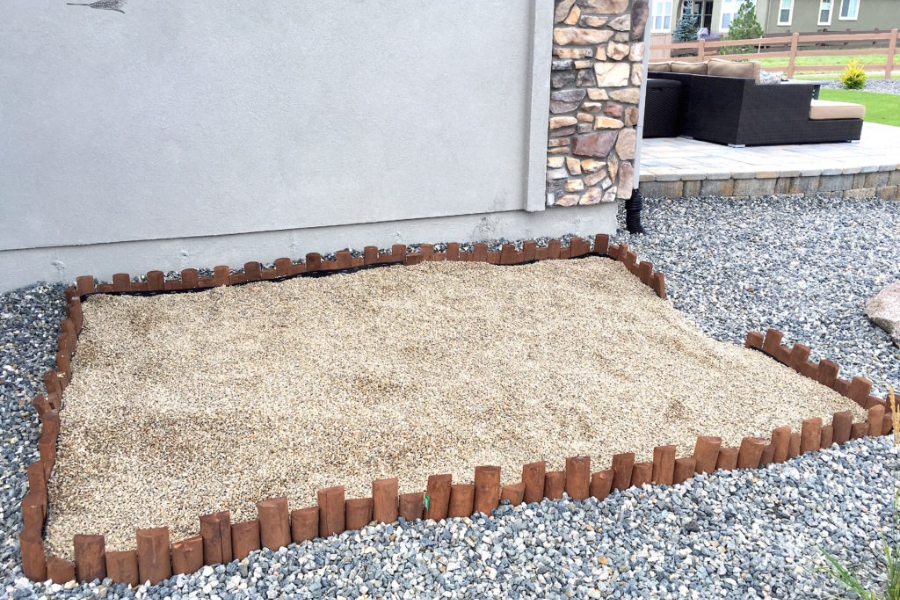
Is Pea Gravel Good for Dogs?
When designing an outdoor potty area for your dog, one of the significant decisions you’ll make is the choice of material.
Pea gravel is a popular choice for many reasons. But is it the best option for your dog? Let’s explore the advantages and potential drawbacks of using pea gravel, as well as other alternatives.
Advantages of Pea Gravel
One of the key benefits of pea gravel is its durability. Unlike other materials that can wear down over time, pea gravel is highly resistant to weather and constant use. This makes it an economical choice in the long run as it needs less replacement.
Pea gravel also boasts excellent drainage properties. This is a critical factor in a dog potty area, as it helps to avoid puddles and keeps the area dry and clean.
Furthermore, pea gravel is often considered more comfortable for dogs than harder surfaces like concrete. Its small, rounded pebbles are gentle on paws, making it a dog-friendly choice.
Potential Drawbacks
Despite its advantages, there are a few potential drawbacks to using pea gravel. One concern is the risk of ingestion. Some dogs may be tempted to chew or swallow the small pebbles, which can cause health issues.
Displacement is another issue. Over time, the pebbles can spread outside the designated potty area, requiring regular maintenance to keep the area tidy. Finally, while pea gravel’s drainage properties are generally a plus, they can also make the area more challenging to clean thoroughly.
Unlike solid surfaces, liquids can seep between the pebbles, potentially leading to odors if not cleaned properly.
Other Alternatives
If pea gravel doesn’t seem to be the best fit for your dog or your yard, there are plenty of other materials to consider.
Concrete is a durable, low-maintenance option, although it can be hard on a dog’s paws. Artificial grass provides a more natural feel and look, and it’s also easy to clean. However, it can be more expensive and may require replacement over time. Wood chips are another alternative that provides good drainage and is gentle on paws, but they may need frequent replacement and can be messy.
In conclusion, while pea gravel has many advantages as a material for an outdoor dog potty area, it also has potential drawbacks.
It’s essential to consider your dog’s habits, your yard’s layout, and your willingness to maintain the area when making your choice. Remember, the goal is to create an outdoor potty area that is convenient, hygienic, and comfortable for your dog.
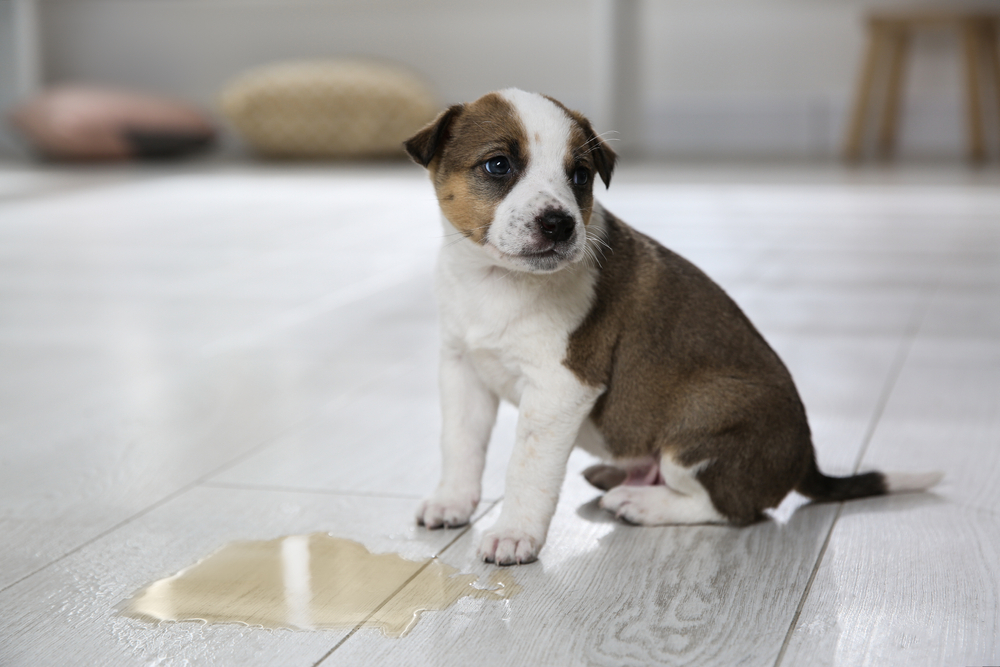
Training Your Dog to Use the Potty Area
Introducing a new potty area to your dog involves a systematic approach, patience, and consistency. Here’s a detailed guide on how to make this transition smooth and effective.
Training Techniques
We recommend using positive reinforcement and habit-forming techniques. When your dog successfully uses the potty area, reward them with a treat or praise. This reinforces the behavior and encourages them to repeat it.
Habit-forming involves establishing a routine. Take your dog to the potty area at regular intervals, such as after meals, before bedtime, and first thing in the morning.
How Do I Get My Dog to Pee on Concrete?
To encourage your dog to pee on concrete, start by making the area appealing. You can place some of their urine-soaked paper towels in the area to signal where they should go.
Consistently bring your dog to the potty area and give the command to “go potty.” Remember to reward your dog each time they successfully use the area. With time and consistency, your dog will become accustomed to eliminating concrete.
What to Do If Your Dog Refuses to Use the Potty Area?
If your dog is reluctant to use the new potty area, don’t worry. It’s a new environment, and it may take some time for them to adjust. Continue to use positive reinforcement and be patient. If resistance continues, consider consulting with a professional dog trainer for additional strategies.
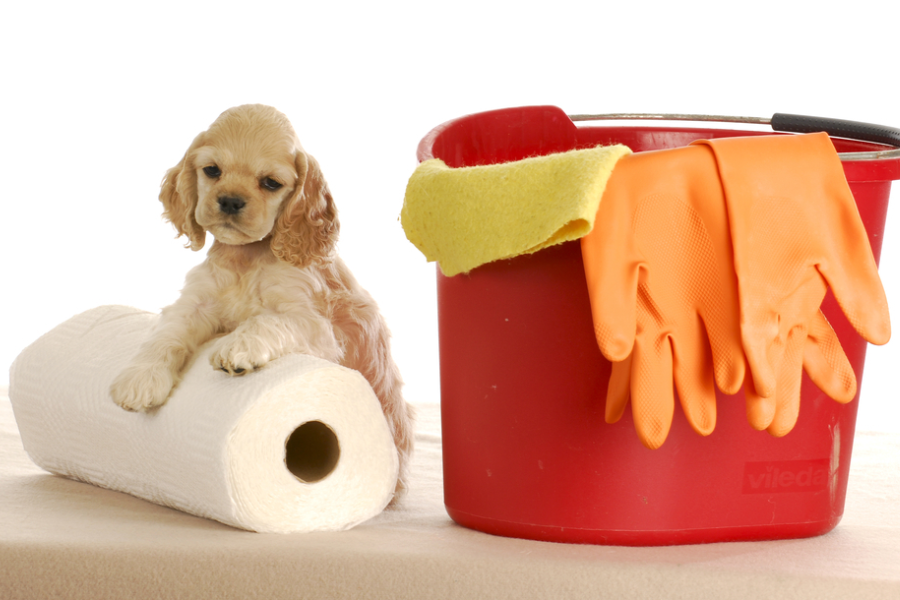
Keeping the Potty Area Nice and Clean
We all want what’s best for our dogs, right? One big part of that is keeping their potty area clean and comfy. Let’s chat about how to do that.
Cleaning and Keeping Things Fresh
First off, clean your dog’s potty area every day. This isn’t just about picking up poop – it’s also about getting rid of bad bugs and smells. Use a hose to wash down the area, scrub it with some pet-safe soap, rinse it off, and let it dry. This helps keep your dog and your family healthy.
When to Get New Patio Material?
Now, sometimes the stuff you use for the potty area – like concrete, gravel, or fake grass – gets old and worn out. You might see cracks in the concrete or patches of missing gravel. If it looks pretty bad, it’s time to get new stuff. You can do this yourself or hire someone to do it for you.
Odor Control
Effective odor management in your dog’s potty area is essential not only for a pleasant living environment but also for the health and well-being of both your pet and your family. Let me share some key tips on how to manage and eliminate these odors effectively.
First and foremost, regular cleaning is the cornerstone of odor control. Removing waste promptly and ensuring the area is cleaned regularly prevents odors from becoming entrenched. When cleaning, it’s important to use the right products. Enzymatic cleaners are particularly effective because they break down the proteins in pet waste that often cause strong odors. It’s also essential to choose cleaning agents that are non-toxic and safe for pets. You can sprinkle it over the potty area and then vacuum or rinse it away.
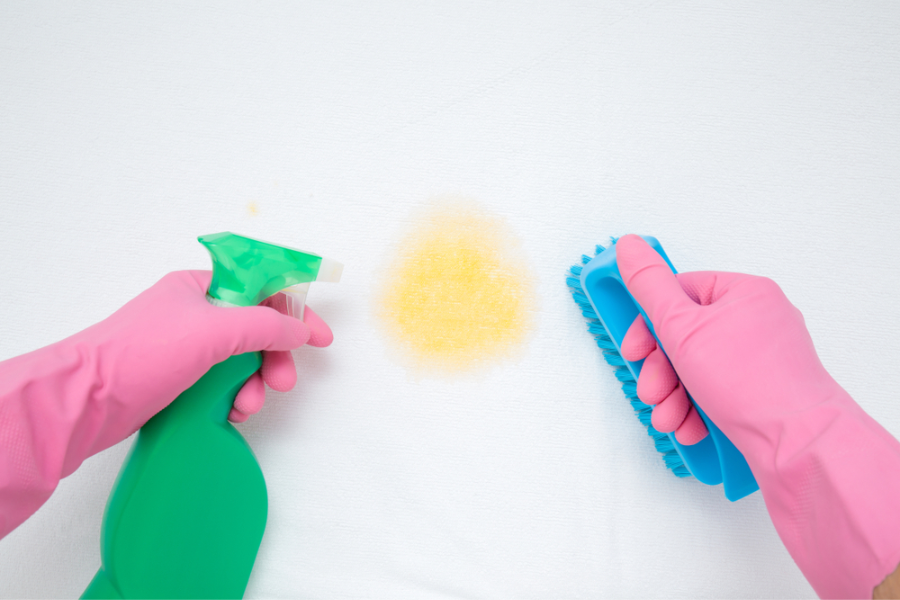
The choice of absorbent materials in the potty area is also key. If you’re using pee pads, opt for highly absorbent ones and change them frequently. For those using artificial turf, consider placing an absorbent layer underneath to trap and hold urine, which helps reduce odors.
Additionally, there are specialized products available, like odor-control sprays designed specifically for pet odors. These can be used alongside your regular cleaning routine for added effectiveness.
By following these tips, you can maintain a fresh and hygienic space for both you and your pet.
Conclusion
In this guide, we’ve walked you through the steps of creating an outdoor dog potty area on concrete, covering everything from the benefits and construction process to selecting the best materials and training your dog to use it. The key is to choose an appropriate location and surface material that suits your dog’s size and breed.
We hope this comprehensive guide inspires you to create your own outdoor dog potty area. This rewarding project not only simplifies your life as a dog owner but also enhances the well-being and comfort of your beloved pet.

